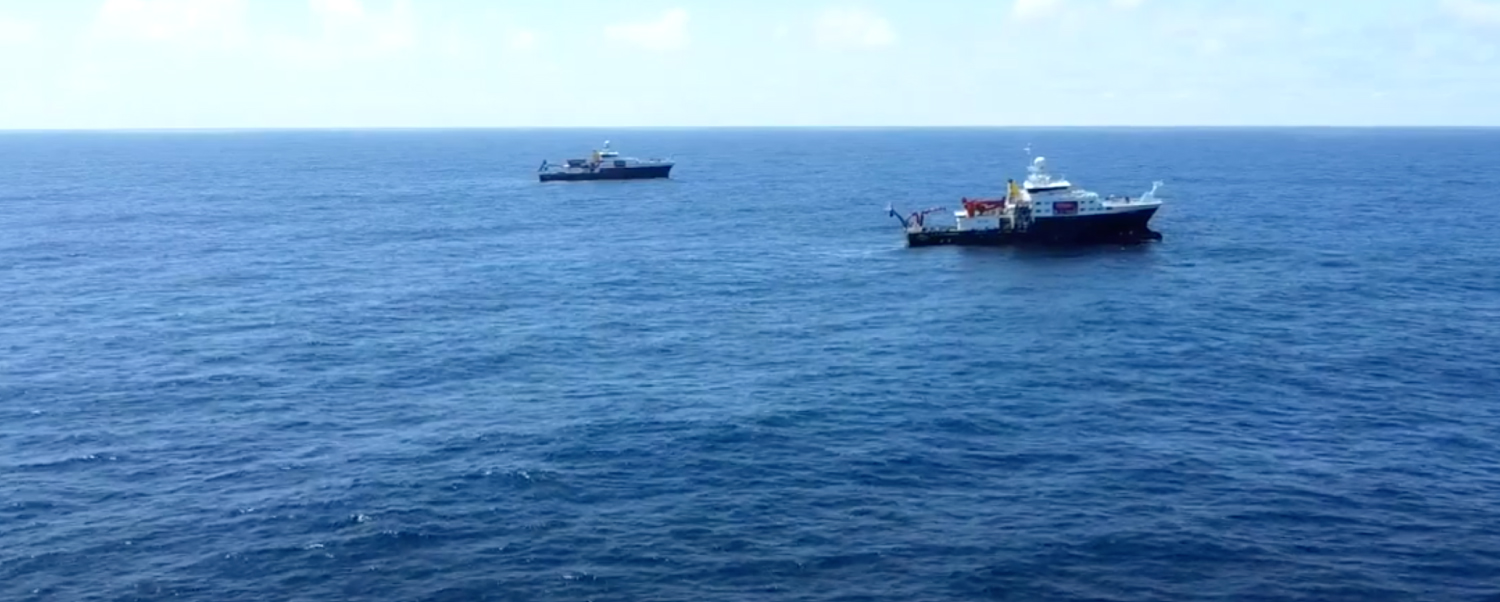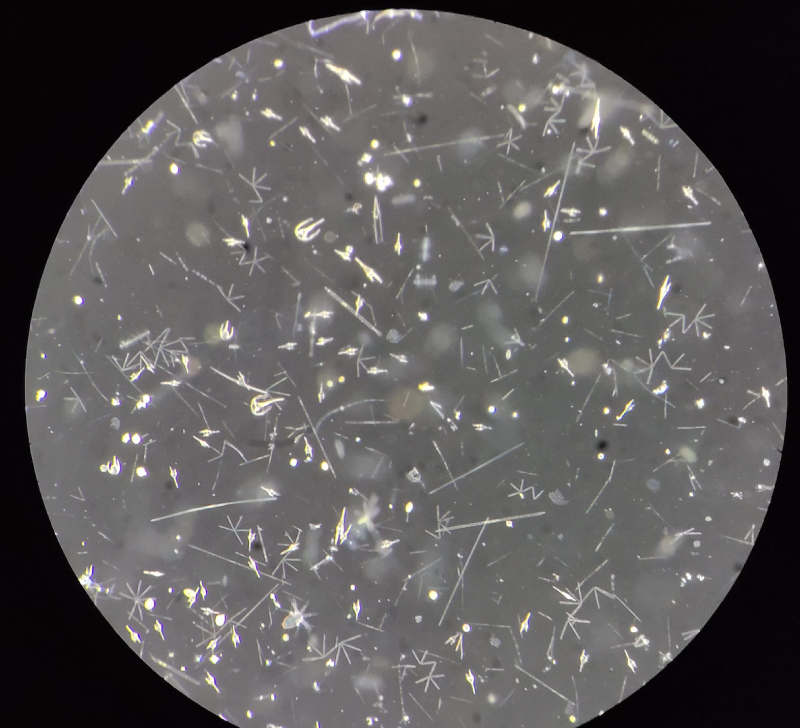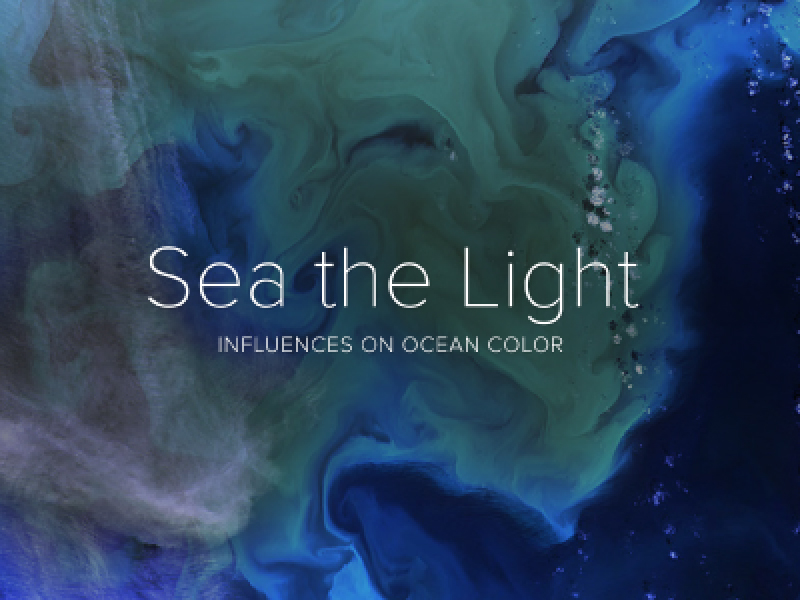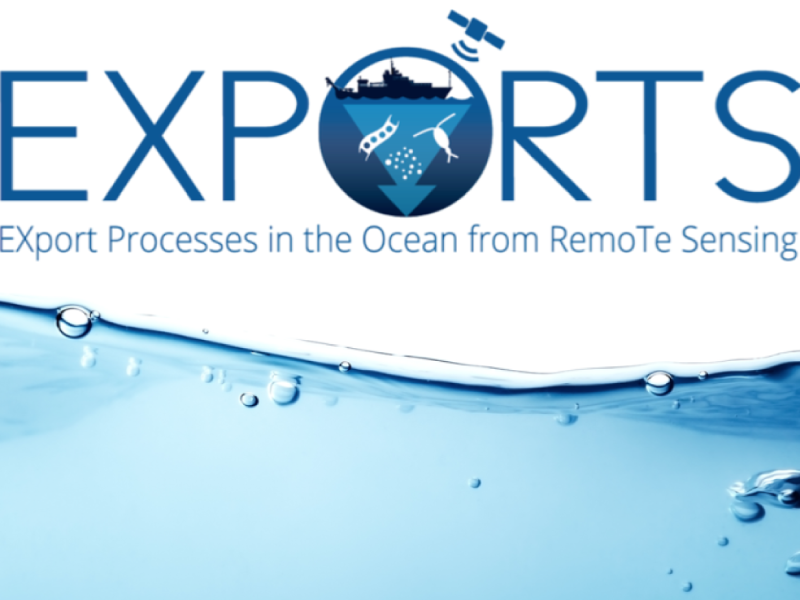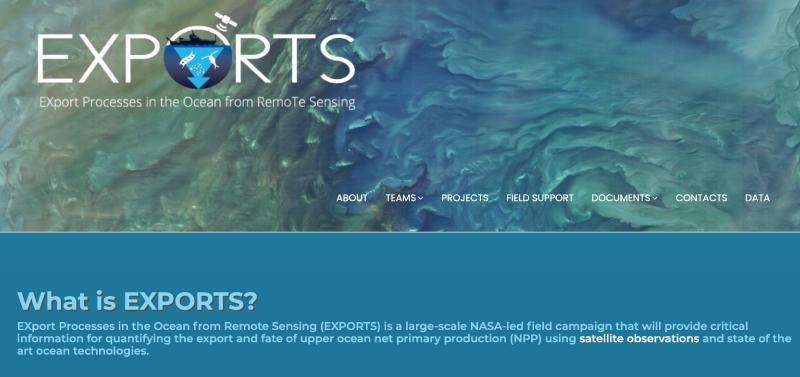Blog
Studying the Ocean's Twilight Zone
Posted on Friday, May 28, 2021 at 10:54:00For the past month, the NASA-led field campaign Export Processes in the Ocean for Remote Sensing (EXPORTS) has been studying how carbon impacts the ocean, especially in a place right beneath its surface called the "twilight zone."
Dive & Discover Expedition 17 involves collaboration between multiple organizations, including Woods Hole Oceanographic Institution's Ocean Twilight Zone project, the National Science Foundation, and NASA Earth Science.
Credit: Marley Parker © Woods Hole Oceanographic Institution.
So why is the twilight zone so important? In short, researchers don't know much about it.
Carbon dioxide dissolves in the ocean, making it available to hungry phytoplankton that, in the presence of sunlight, will bloom. In some cases, these blooms will paint surface waters in beautiful shades of green and brown that can be observed even from space.Making the EXPORTS campaign a reality has been challenging during the pandemic. Despite the challenges, more than 50 researchers made their way to the Northern Atlantic for the campaign. Here's how its going:
- Quarantine. In order to board ships, researchers were asked to quarantine for two weeks and take multiple Covid tests. They found ways to entertain themselves by making cheese, playing games and doing virtual art classes. The rigorous measures paid off and everyone tested negative.
- Finding the eddies. The ocean is full of eddies - swirling water masses that are the ocean equivalent of hurricanes. The EXPORTS mission will find and track a month-long eddy using a combination of satellite and ground data. EXPORTS is centered around measuring carbon "export", or how carbon locked up in biomass is transported from the ocean surface to the deep ocean interior. So, it is important that the chosen eddy effectively traps water masses down to about a thousand feet (about several hundred meters). Excerpt by Zachary K. Erickson, NASA Postdoctoral Program Fellow & Ocean Ecology Laboratory.
- Unexpected storms. Two days after sailing northwest from Vigo, Spain, the ships reached their study site where two vessels, the RSS Discovery and the RSS James Cook, were sampling. After 36 hours, winds picked up to 50 knots and seas quickly swelled to 15-20 feet or more. Science operations stopped. Researchers double-checked all the ropes, ratchet straps, and bungies holding down our expensive scientific gear in the lab. From there, waves started crashing onto the ship. After four days, the weather improved enough to allow sampling to resume. Excerpt by Ken Buesseler, Senior Scientist, Woods Hole Oceanographic Institution.
- The PACE benefit. The instrumentation deployed during EXPORTS is highly refined, and in some cases experimental. Optical instruments to measure ocean color will be akin to instruments which will be aboard future NASA satellites. The next generation of these satellites, like NASA's Plankton, Aerosol, Cloud, ocean Ecosystem (PACE) mission, will be hyperspectral, meaning it will be able to collect data across the entire visible spectrum, and capture information beyond the visible part, including ultraviolet and shortwave infrared. Excerpt by Lara Streiff, NASA's Goddard Space Flight Center, Greenbelt, MD.


